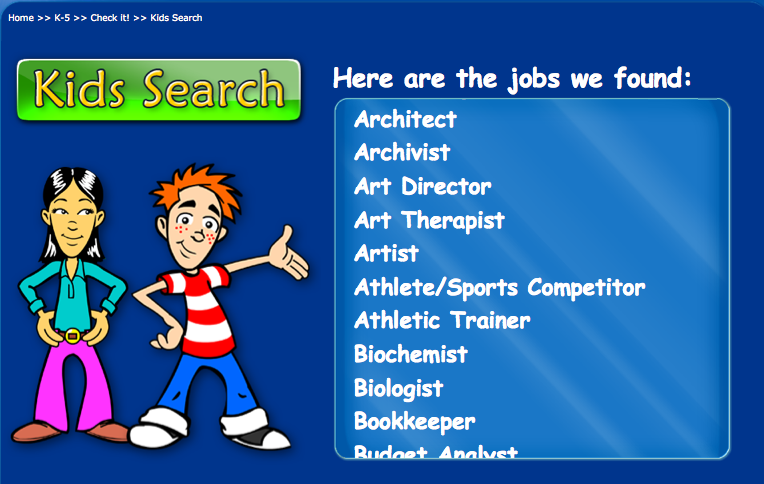 I’m so sorry that it took me this long to find time to blog more details about the CareerSmarts unit, but finally, here are the details about the second task, web-based career exploration. CareerSmarts is a student-directed, technology-based unit that I developed for upper elementary students. I’ve heard from a bunch of elementary and middle school counselors who want to use it in their schools – which is so exciting – and I’m glad to share all the information you need to be able to recreate it yourself. (Check out the links for a unit overview, specifics about teaching the unit’s first two lessons on multiple intelligences, coordinating Career Day , Kid-Created Career Trading Cards, and the culminating avatar creation project.)
I’m so sorry that it took me this long to find time to blog more details about the CareerSmarts unit, but finally, here are the details about the second task, web-based career exploration. CareerSmarts is a student-directed, technology-based unit that I developed for upper elementary students. I’ve heard from a bunch of elementary and middle school counselors who want to use it in their schools – which is so exciting – and I’m glad to share all the information you need to be able to recreate it yourself. (Check out the links for a unit overview, specifics about teaching the unit’s first two lessons on multiple intelligences, coordinating Career Day , Kid-Created Career Trading Cards, and the culminating avatar creation project.)
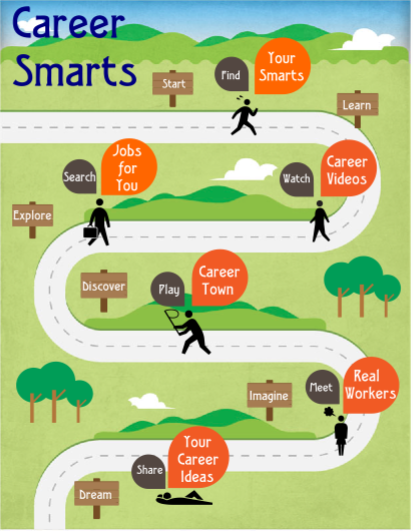 At the second, third, and fourth stops on the CareerSmarts journey, students go online to explore a variety of careers. There’s even a nifty gamification incentive to encourage them to explore a number of different careers and help them remember to document their findings! From the previous lessons in the CareerSmarts unit, they already know a lot about multiple intelligences. In the next three lessons they apply that knowledge to the careers they explore by watching videos of their choice (2 lessons) and using a search engine (1 lesson.) My original plan for the unit was to spend one lesson on career games, but instead it works out well to use the games as “filler” activities at the end of any of the CareerSmarts lessons for students who do not have time to start another task. The Career Town games (we use Levels 2 & 3) are from Virginia Career View, an excellent resource.
At the second, third, and fourth stops on the CareerSmarts journey, students go online to explore a variety of careers. There’s even a nifty gamification incentive to encourage them to explore a number of different careers and help them remember to document their findings! From the previous lessons in the CareerSmarts unit, they already know a lot about multiple intelligences. In the next three lessons they apply that knowledge to the careers they explore by watching videos of their choice (2 lessons) and using a search engine (1 lesson.) My original plan for the unit was to spend one lesson on career games, but instead it works out well to use the games as “filler” activities at the end of any of the CareerSmarts lessons for students who do not have time to start another task. The Career Town games (we use Levels 2 & 3) are from Virginia Career View, an excellent resource.
Gamification
The CareerSmarts unit is engaging, but it requires some sustained work on the part of students. How can you motivate kids to dig more deeply into their learning? Appeal to their love of leveled games! To build excitement and buy-in about the career exploration process, you can use Class Badges, a site through which you award your students badges for many different kinds of achievements. Class Badges makes it very easy to select or create the badges you want. In order to award the badges, though, you have to set up your class lists, which is simple, but takes some time.
Here’s how I gamify CareerSmarts: Badges can be earned by achieving levels; kids are used to this concept from their experience with video games. For every five careers explored, students achieve a new level and earn a badge. I initially set up three levels, just hoping to get most kids to get to Level 1, but the kids loved exploring careers so much that I ultimately had to create badges up through Level 7!
Here’s what a student Class Badges page looks like. This particular student was highly motivated, as you can see, and spent time exploring careers at home as well as during class time, as did quite a few students! When all the unit assignments are completed, students earn the CareerSmarts badge.
To introduce the career exploration steps and explain the Class Badges process to the kids, I created the following video, which will help explain it all to you too!
Documenting Careers Explored
For each career explored, students submit a Career Investigation Survey that I created in Google Forms. This allows me to easily assess how many and which kind of careers students are exploring, and how well they are able to apply the information learned during the multiple intelligences lessons. It also provides documentation so students can earn badges. No Career Investigation Survey, no credit towards badges! The checklist form, which only takes a couple of minutes to fill out, asks students to enter the exploration resource used, job title, level of school required, and then make their best judgment about which three of the eight multiple intelligences the job might require. They use this form again after Career Day to document some of what they learned from the workers they interview.
Career Videos
To introduce the video exploration process and teach the kids how to use the Career Investigation Survey, we watch the video Design Squad: Roller Coasters as a class. This 2:23 video features a mechanical engineer who designs wooden roller coasters – it’s VERY high interest and does a wonderful job of highlighting how your interests as a kid can relate to your career! Then I project the survey and we fill it out together, focusing our discussion on how to identify the multiple intelligences they see coming into play. The kids use the multiple intelligences presentation from an earlier lesson LINK as a resource when they need help determining which MIs are central to each job. Some of the videos used in these lessons do not outline the education required. I explain to kids that if that is the case they can ask for my help in figuring it out.
Now, about those videos . . . Wouldn’t it be great if there were a curated collection of career videos suitable for upper elementary and middle school students? Well, I couldn’t find one, so I spent a LOT of time searching YouTube and other sites to find what I needed. Since there’s no need to reinvent the wheel, here are links to the videos I use. A bunch are in the YouTube CareerSmarts playlist I created. There are also some great videos about engineering careers at Design Squad Nation, but they’re mixed in with other fascinating, but non-career videos. Linking directly to each video is time-consuming, so I give my students specific titles and how to find them. You can find the specific titles you’re interested in by going to Design Squad Nation→Watch→Heroes. Another good source for appropriate career videos is Career Aisle, although I found that I had to pre-select the videos to meet the requirements of the unit. I’ve linked all these career videos – the YouTube playlist and other videos that aren’t in YouTube to this CareerSmarts Learnist board.
After exploring videos for two class sessions, the kids use Kid Search, a career search engine from Virginia Career View. In Kid Search, students complete brief checklist surveys under the headings of Data, People, and Things; Subjects; and Interests. (There is also a Clusters heading, but since the concept of career clusters is not a part of this unit, I have the kids use the other three headings.) The survey generates a long list of careers for kids to explore.
You won’t believe how exciting this is for them! You will hear lots of “I could be a criminal investigator!” “I can be a hydrologist! – Wait,what’s a hydrologist?” and possibly the most thrilling of all, “I can be a video game designer!” Students click on the job titles to find comprehensive but kid-friendly descriptions of what the job entails and what kind of education is required. Before teaching this lesson, I had assumed that students would not like Kid Search as much as watching the videos, because Kid Search requires a fair amount of reading, but I was so wrong! They are all so engaged, and excitedly share pieces of their information with their neighbors, often inspiring each other to check out other career possibilities. You may find that they’re so interested in the exploration process that you have to remind them to fill out the Career Investigation Survey!
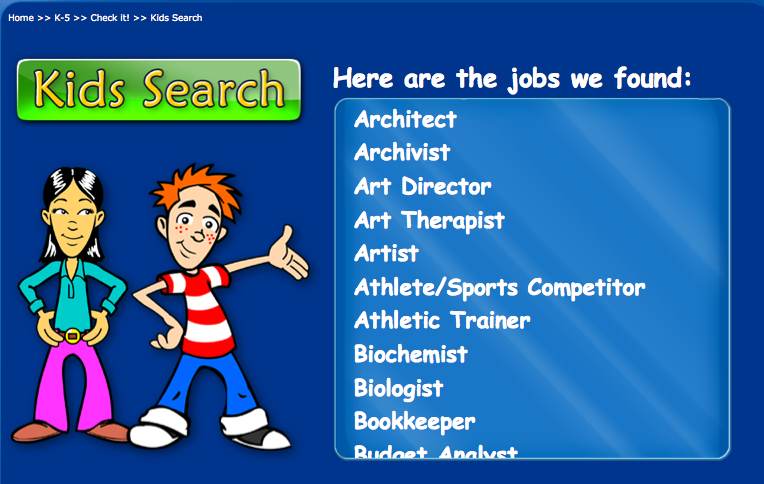 These lessons are so rewarding to teach, and the kids love them! By the time they have completed their video and Kid Search career explorations, students have gained familiarity with a variety of careers, sharpened their understanding of multiple intelligences, and developed a curiosity about future possibilities in their lives. And they’re getting really excited about the coming Career Day!
These lessons are so rewarding to teach, and the kids love them! By the time they have completed their video and Kid Search career explorations, students have gained familiarity with a variety of careers, sharpened their understanding of multiple intelligences, and developed a curiosity about future possibilities in their lives. And they’re getting really excited about the coming Career Day!
You might also be interested in:
My Multiple Intelligences: The First Stop on the CareerSmarts Journey
Avatars at the Virtual Career Fair

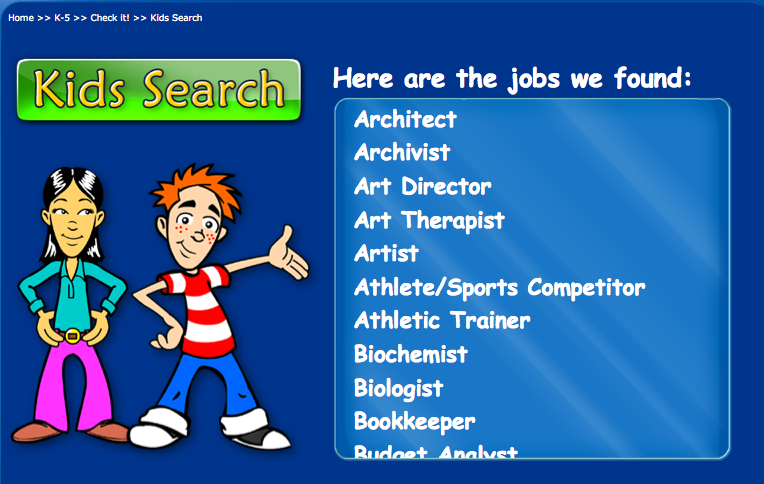
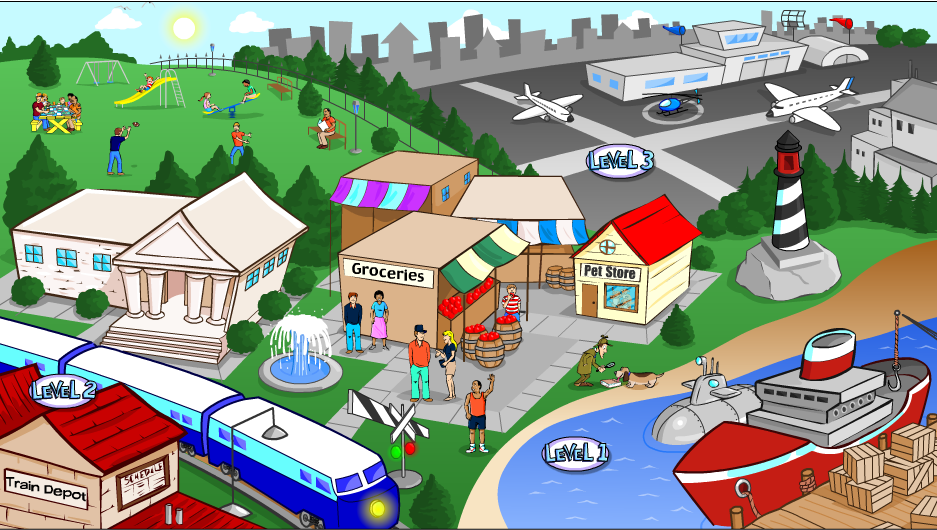
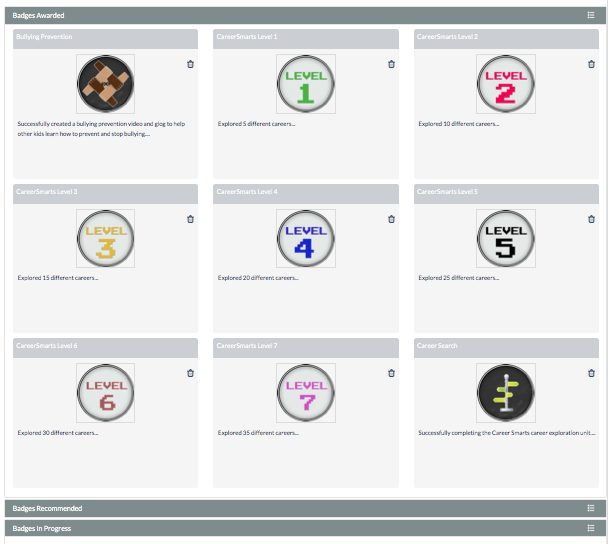
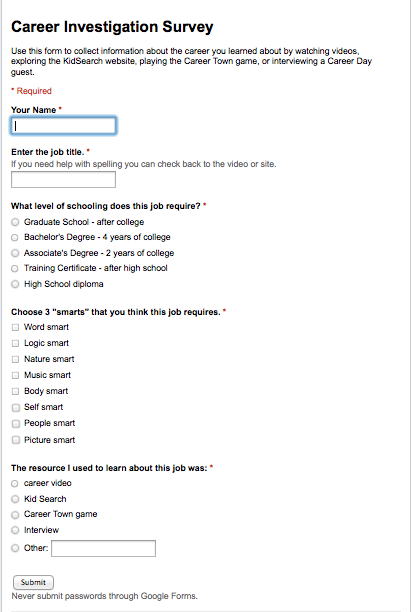
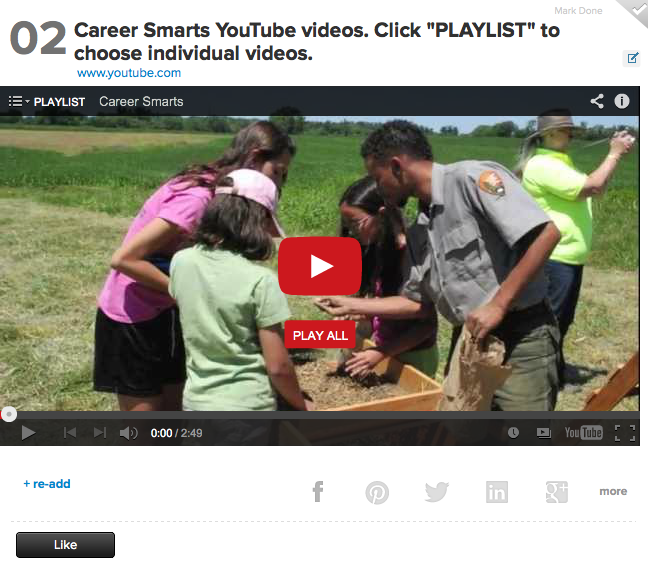

This is so awesome! I’m about to start a college and career unit with my 5th graders and your career smarts unit has been a HUGE help towards helping me build my unit. You seriously rock!
Thanks so much! I’m glad it’s been helpful. I’d love to hear about how it goes!
Rebecca
Love all your ideas. Your students must have truly loved the lessons and activities and I’m sure they all learned a lot. Thank you for sharing your lesson plans and resources. I plan to incorporate some things into my lessons.